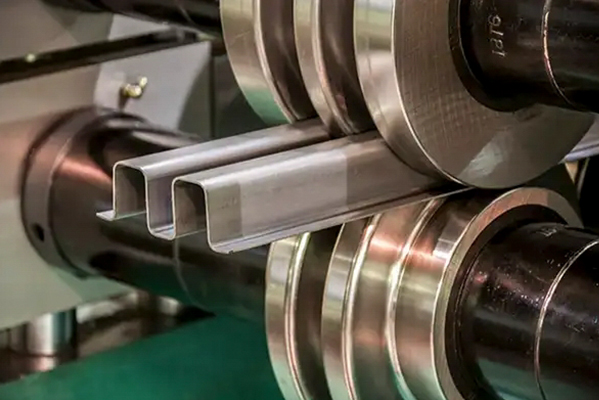Navigation Menu
Contact Us
- Email:
- info@wxavatar.com
- Address:
- Yurong Village, Yuqi Street, Huishan District, Wuxi, China.
Release Date:Apr 03, 2025 Visit:51 Source:Roll Forming Machine Factory
Roll forming is a continuous metal forming process that transforms flat metal sheets or coils into desired cross-sectional profiles by passing them through a series of rolls. This method is widely used in industries such as construction, automotive, and appliance manufacturing due to its efficiency, precision, and cost-effectiveness. Understanding the process flow of a roll forming machine is essential for optimizing production and ensuring high-quality output.
Process Flow of a Roll Forming Machine
1. Material Uncoiling
The process begins with loading a metal coil onto an uncoiler. The uncoiler gradually feeds the metal strip into the machine while maintaining proper tension to prevent material distortion. Some systems include a straightener to remove any initial curvature from the coil.
2. Pre-Punching or Notching (Optional)
Depending on the product requirements, the metal strip may pass through a punching or notching station before entering the roll forming section. This step creates holes, slots, or other cutouts that would be difficult to form after shaping.
3. Roll Forming
The core of the process involves passing the metal strip through a series of roller dies arranged in tandem. Each set of rollers incrementally bends the metal until the desired profile is achieved. The number of forming stations depends on the complexity of the shape.
Initial Forming Stages: Early rollers make slight bends to avoid excessive stress on the material.
Intermediate Stages: Subsequent rollers progressively refine the shape.
Final Stages: The last rollers ensure precise dimensions and smooth edges.

4. Cutting to Length
After the metal has been fully formed, it moves to a cutting station where it is trimmed to the required length. Common cutting methods include:
Flying Cut-Off Saws: Cut the material while it is still moving.
Hydraulic Shearing: Provides clean, burr-free cuts.
Punching or Laser Cutting (for complex shapes).
5. Post-Forming Operations (Optional)
Additional processes may be applied depending on the application:
Bending or Curving: Some profiles require secondary bending.
Welding or Joining: For closed profiles (e.g., pipes or tubes).
Surface Treatment: Coating, painting, or galvanizing for corrosion resistance.
6. Stacking or Packaging
The finished products are collected, inspected for quality, and stacked or packaged for shipment. Automated stacking systems improve efficiency in high-volume production.
Conclusion
The roll forming process is a highly efficient and versatile method for producing consistent, high-quality metal profiles. By following a structured flow—from uncoiling and forming to cutting and finishing—manufacturers can achieve precise shapes with minimal material waste. Understanding each step helps in optimizing machine setup, reducing defects, and improving overall productivity.